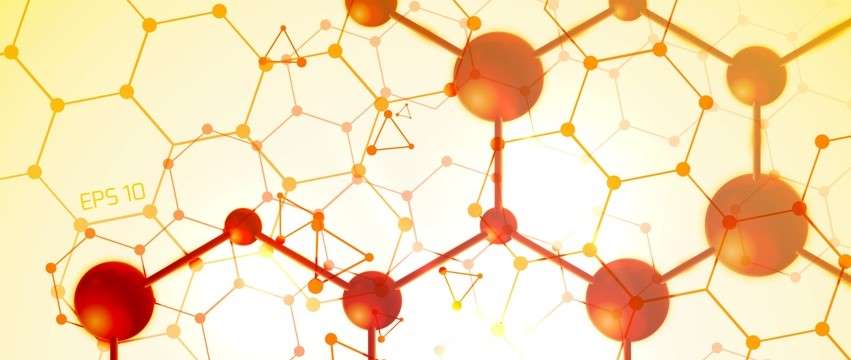Nanotech Used in Novel Anti-Corrosion Polymer Coating
How the smart application of nanomodified polymers is making improved protection for solar panels, machinery, infrastructure, and more.

Recent nanotechnology research at Massachusetts Institute of Technology (MIT) has produced a novel polymer film that is effectively impermeable to gases — offering major potential as an anti-corrosion, protective coating for solar-panels, infrastructure, machinery and more. It is a discovery which presents a golden opportunity for manufacturers to add value to a next-generation barrier materials.
Because conventional polymers are made up of a tangle of loosely connected, spaghetti-likemolecules, they have minuscule spaces between the strands. This means that traditional polymers always have at least some gas permeability, as gas molecules can pass through the holes.
To solve this problem, an MIT team has created a polymer which can repel gases even though it is a layer only a few nanometres thick. Testing has shown the barrier to be practically flawless, with a level of impermeability comparable to that of molecularly thin crystalline solids like graphene.

The material, termed a two-dimensional polyaramid (“2DPA-1”), is produced by a solution-phase polymerisation and then self-assembles into molecular sheets. Its standout attributes include:
· Gas near-impermeability (for nitrogen, helium, oxygen, methane, etc.) measured at least 1/10,000 the level of current polymers — nearly matching the barrier performance of crystalline materials such as graphene.
· A film thickness on the order of nanometres, which means minimal material usage for high effectiveness.
· Application via film/coating format (rather than requiring exotic substrate or single-crystal fabrication), which supports scalability.
Because corrosion and degradation of materials are often triggered by ingress of moisture and gases, a near-impermeable barrier has significant implications for durability, lifetime and maintenance costs of advanced equipment and machinery exposed to the risk of corrosion.
“Our polymer is quite unusual,” notes Prof. Michael Strano, who worked on the discovery. “It’s obviously produced from a solution-phase polymerization reaction, but the product behaves like graphene, which is gas-impermeable because it’s a perfect crystal. However, when you examine this material, one would never confuse it with a perfect crystal.”
In fact, the polymer is made up of a series of discs which lie on top of one another to form a layer without space for gas molecules to escape.
“The fact that they can pack flat means there’s no volume between the two-dimensional disks,” says Strano. “That’s unusual [as] with other polymers, there’s still space between the one-dimensional chains, so most polymer films allow at least a little bit of gas to get through.”

Prior to this nanotechnology discovery, scientists were focused on graphene as a way to make barriers which were impermeable to gas. However, due to scaling up issues, it was never possible to simply paint graphene onto a practicably large surface.
“We can only make crystal graphene in very small patches,” says Strano. “A little patch of graphene is molecularly impermeable, but it doesn’t scale. People have tried to paint it on, but graphene does not stick to itself but slides when sheared. Graphene sheets moving past each other are considered almost frictionless.”
Conversely, the strong hydrogen connections between the stacked discs of this new barrier polymer adhere together well. Consequently, the researchers were able to demonstrate that a perovskite crystal's lifetime could be increased by weeks with a coating that was only sixty nanometres thick.
If a thicker layer of the polymer coating could be made, then a perovskite’s lifetime could be extended by months or even years.
This could be a game-changer for the solar panel industry, as perovskites have the potential to be inexpensive and lightweight solar cells. Yet because they degrade considerably more quickly than the silicon solar panels, it is a cheap technology that has not caught on. This new polymer film could allow for their widespread use.
Related articles: How to Implement Nanotechnology into Existing Products or Beyond Kevlar: Nanotech for Bulletproof Polymer Fibres
Additionally, the barrier nanoscale coating could be applied to a variety of other machines and structures.
“Using an impermeable coating such as this one, you could protect infrastructure such as bridges, buildings, rail lines — basically anything outside exposed to the elements,” notes Strano. “Automotive vehicles, aircraft and ocean vessels could also benefit. Anything that needs to be sheltered from corrosion. The shelf life of food and medications can also be extended using such materials.”

For manufacturers and materials buyers, the emergence of nanomodified barrier polymers, such as MIT’s 2DPA-1, marks a significant commercial turning point. A coating only a few nanometres thick that behaves like a flawless gas barrier is not merely a scientific curiosity — it is a potential new class of high-value performance materials.
If these polymers can be produced and applied at scale, they offer a route to longer-lasting solar panels, corrosion-resistant infrastructure, and machinery with dramatically reduced maintenance burdens. That combination of minimal material use, transformative protection, and compatibility with existing coating processes places this discovery directly in the path of market demand for durability, sustainability, and cost efficiency.
Another win for nanotechnology research impacting commercial markets.
Photo credit: almumtazza, kjpargeter, Freepik, & Macrovector

